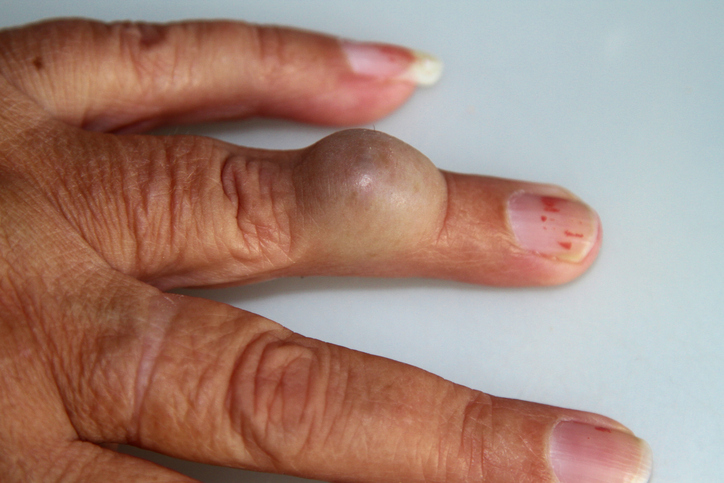
Most lumps and swellings are benign (not cancerous) and are harmless, especially the kind that feel soft and roll easily under the fingers (such as lipomas).
A lump or swelling that appears suddenly (over 24 to 48 hours) and is painful is usually caused by an injury or an infection.
Common causes of skin lumps include:
Hidradenitis suppurativa. Hidradenitis suppurativa (hi-drad-uh-NIE-tis sup-yoo-ruh-TIE-vuh), also known as acne inversa, is a condition that causes small, painful lumps to form under the skin, according to the Mayo Clinic. It usually starts after puberty before the age of 40 and is more common in Black people.
Lipomas – Lipomas are slow growing and usually harmless. Rarely, they can be cancerous. Some people have more than one. Lipomas are just under the skin and move easily when pressure is applied. They commonly occur in the neck, shoulders, back, abdomen, arms, and thighs.
Enlarged lymph glands – usually in the armpits, neck, and groin. Can be caused by hormones or common illnesses.
Cysts – a closed sac in or under the skin that is lined with skin tissue and contains fluid or semi-solid material. Cysts are common on the skin and can appear anywhere. They feel like large peas under the surface of the skin. Cysts can develop as a result of infection, clogging of sebaceous glands (oil glands), or around foreign bodies, such as earrings.
Benign skin growths (seborrheic keratoses or neurofibromas) – one of the most common noncancerous skin growths in older adults. While it’s possible for one to appear on its own, multiple growths are more common.
Seborrheic keratosis often appears on the face, chest, shoulders, or back. It has a waxy, scaly, slightly elevated appearance. No treatment is necessary. If the seborrheic keratosis causes irritation, it can be removed by a doctor.
Boils, painful, red bumps – usually involving an infected hair follicle
Corn or callus – majority caused by skin thickening in response to continued pressure (for example, from shoes) and usually occurring on a toe or foot.
Warts – a skin virus that develops a rough, hard bump, usually appearing on a hand or foot and often with tiny black dots in the bump
Moles – skin-colored, tan, or brown bumps on the skin. Many moles are non-cancerous, but here’s how to tell if yours may be cancer or not. Click here.
Abscess – infected fluid trapped in a closed space from which it cannot escape
Cancer of the skin-colored or pigmented spot that bleeds easily, changes size or shape, or crusts and does not heal. But in rare cases, an unexplained lump, bump or swelling can be a sign of a more serious issue beneath the skin.
Here’s what you need to know: Bumps that are cancerous are typically large, hard, painless to the touch and appear spontaneously. The mass will grow in size steadily over the weeks and months. Cancerous lumps that can be felt from the outside of your body can appear in the breast, testicle, or neck, but also in the arms and legs.
One type of cancerous lump that can form almost anywhere in the body is called…








